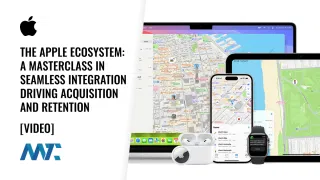I began my digital career by connecting PCs to PLCs and networking the devices to retrieve performance data for preventive maintenance routines. Back then, building a PC was part art, part obsession, part continual discovery. You’d choose your case, pick a motherboard you liked, slot in the memory, add your video card, connect the storage, tweak the cooling, and iterate. As new components hit the market, you swapped in what you needed, year after year. It felt like these machines were alive—you could nurture them, extend their life, customize them to your needs.
That mindset is largely gone. Companies favor sealed units. Most modern laptops are glued or soldered together, with little room for upgrades or repairs. Apple’s design direction, once a champion of elegant engineering, has shifted over time toward monolithic, closed systems. Your MacBook Air—or any modern Mac—offers performance and polish, but disassembly is discouraged (and often practically impossible without damaging parts). You can’t upgrade RAM, storage, or even the battery in many models without specialized tools or a complete replacement.
This design philosophy treats electronics as disposable. It directs you toward trade-ins and new purchases rather than repairs or incremental upgrades. The shorter the lifecycle, the more frequently you’re nudged into buying again. That’s not just frustrating for enthusiasts—it also has environmental costs.
As components scale down and integration increases, the excuse that modularity is impractical is less convincing. If done well, modular design needn’t be clunky or inefficient. It can actually deliver more longevity, less waste, and deeper user engagement.
Framework: A Live Case Study in Modularity
Framework is the one company I’ve found that unapologetically embraces modularity, repairability, and longevity in a laptop form factor. Their design philosophy is to make as many parts replaceable—by the user, with standard connectors, screws, and open documentation—rather than soldered or glued.
Here’s how their current lineup reflects that philosophy (as of October 2025):
Core Modular Features Across Framework Laptops
- Memory (RAM): The framework utilizes SODIMM slots (DDR5), allowing for full upgradeability.
- Storage (SSD): They support M.2 NVMe SSDs (in various form factors), allowing for user-swappable drives.
- Expansion Cards / Ports: Their signature system allows you to choose which I/O ports are present on the chassis (USB-C, USB-A, HDMI, DisplayPort, microSD, etc.) and easily swap them out later.
- Other modules: In addition to I/O, you can replace the battery, display assembly, keyboard modules, Wi-Fi card, webcam, and even the motherboard itself.
- Repair ecosystem: Framework maintains a Marketplace for parts, including used and refurbished modules, providing a path for sourcing replacements.
Because of this architecture, you’re not forced to toss the whole machine when one part becomes obsolete or fails. You can, in many cases, replace or upgrade only that component.
The Current Model Lineup (2025 Snapshot)
To bring this to life, here’s a look at the main Framework products and how they reflect the modular ethos.
- Framework Laptop 13: This is the classic model in the lineup. Over time, Framework has evolved and added features, but its core modular DNA remains intact. The 2025 updates include support for Intel Core Ultra and AMD Ryzen AI 300 series CPUs, the ability to mix and match mainboards over generations, port modularity via the expansion cards, and high repairability ratings. With the Laptop 13 series, you can start with a base configuration and upgrade it module by module as time goes on—much like the approach you’d take with a desktop PC in the old days.
- Framework Laptop 16: For users seeking more power—especially discrete graphics—this is their flagship modular gaming and desktop-replacement model. It offers an expansion bay that supports hot-swappable discrete GPU modules, including the RTX 5070 Graphics Module. It also supports AMD Ryzen AI 300 series chips, and modular keyboard and input systems. This model is the strongest evidence to date that modular GPUs in laptops—long considered a fantasy—can be viable in real systems.
- Framework Laptop 12 (Convertible / 2-in-1): The Laptop 12 is their foray into smaller, convertible devices while retaining modularity. Announced in February 2025, it features a 12.2-inch convertible touchscreen with stylus support, up to 48 GB DDR5 RAM, and 2 TB NVMe SSD—all user-upgradeable. It retains the expansion card system with four slots for user-swappable I/O ports. Early reviews praise the repairability and modularity of the design, although they note that the specs are modest compared to those of high-end productivity laptops. It’s a bold move, taking modularity into a thin, convertible form factor.
I’m Not Ready to Give Up on Apple Yet
The ethos behind Framework resonates deeply with what I loved about building PCs. It’s not just about swapping parts—it’s about agency, control, longevity, and sustainability. It flips the narrative of electronics from a disposable commodity to an evolving platform.
If mainstream players, including Apple, embraced more modularity, the industry would shift. Instead of silos and forced obsolescence, we could see a future where your computer is an ecosystem you upgrade over time, patching and expanding rather than replacing.
That said, I’m not ready to abandon Apple just yet. Their integration, ecosystem coherence, and hardware-software polish remain unmatched. Their performance and design continue to push boundaries. But I hope they evolve away from the trade-in or toss model and explore a more modular, repairable future.
In the meantime, Framework offers a hopeful countercurrent—a sign that modular, upgradeable electronics aren’t a relic of the past but a possible path forward. I may still use Apple gear, but I carry in me the hope that one day even they will embrace a future where we don’t throw away devices—we evolve them.
